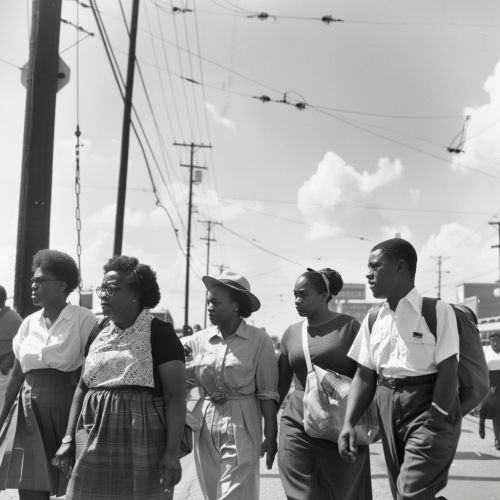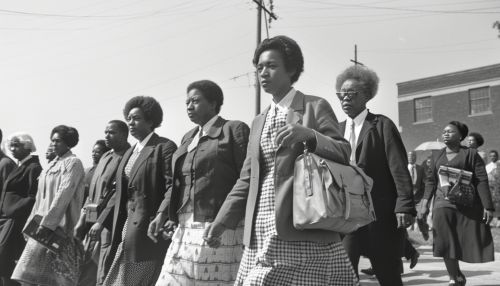Civil Rights Movement in the United States
Background and Origins
The Civil Rights Movement in the United States was a decades-long struggle by African Americans and their allies to end institutionalized racial discrimination, disenfranchisement, and racial segregation in the United States. The movement has its roots in the post-Civil War era, particularly during the Reconstruction (1865–1877), when efforts were made to integrate freed slaves into American society. However, these efforts were met with significant resistance, leading to the establishment of Jim Crow laws in the South, which enforced racial segregation and disenfranchised African Americans.
Early Efforts and Legal Challenges
The early 20th century saw a series of legal challenges to segregation and disenfranchisement. Organizations such as the NAACP played a crucial role in these efforts. One of the most significant early victories was the 1954 Supreme Court decision in Brown v. Board of Education, which declared state laws establishing separate public schools for black and white students to be unconstitutional.
Major Campaigns and Events
Montgomery Bus Boycott
The Montgomery Bus Boycott (1955–1956) was a pivotal event in the Civil Rights Movement. Sparked by the arrest of Rosa Parks for refusing to give up her seat to a white person, the boycott led to a Supreme Court ruling that segregation on public buses was unconstitutional. This event also brought Martin Luther King Jr. to national prominence as a leader of the movement.


Sit-ins and Freedom Rides
The sit-in movement began in 1960 when four African American college students sat at a segregated lunch counter in Greensboro, North Carolina, and refused to leave. This act of nonviolent protest spread rapidly across the South. The Freedom Rides of 1961 were organized by the Congress of Racial Equality (CORE) to challenge segregation in interstate bus terminals. Riders faced violent resistance, but their efforts led to federal enforcement of desegregation laws.
Birmingham Campaign
The Birmingham campaign of 1963, organized by the Southern Christian Leadership Conference (SCLC), aimed to bring attention to the integration efforts of African Americans in Birmingham, Alabama. The campaign was marked by widespread use of nonviolent tactics, including marches and sit-ins. The violent response by local authorities, including the use of fire hoses and police dogs, garnered national attention and increased support for the movement.
March on Washington
The March on Washington for Jobs and Freedom took place on August 28, 1963. It was one of the largest political rallies for human rights in United States history and called for civil and economic rights for African Americans. It was during this event that Martin Luther King Jr. delivered his iconic "I Have a Dream" speech, which articulated the aspirations of the movement.
Legislative Achievements
The Civil Rights Movement led to significant legislative changes. The Civil Rights Act of 1964 was a landmark piece of legislation that outlawed discrimination based on race, color, religion, sex, or national origin. It ended unequal application of voter registration requirements and racial segregation in schools, workplaces, and public accommodations. The Voting Rights Act of 1965 aimed to overcome legal barriers at the state and local levels that prevented African Americans from exercising their right to vote.
Impact and Legacy
The Civil Rights Movement had a profound impact on American society. It dismantled the legal basis for racial segregation and discrimination, paving the way for subsequent movements advocating for the rights of other marginalized groups. The movement also inspired global human rights movements and set a precedent for nonviolent protest as a powerful tool for social change.
